Are you looking for ways to fight climate change?
There are a lot of ways to take action to save the climate. We could all drive Teslas, vote for the right politicians, and spend a weekend cleaning up a national park.
However, many climate change solutions involve lots of money, time, and hard work.
For the majority of us on a day-to-day basis, we need simple changes in our lives that are still powerful and effective and won’t break the bank.

Looking for Climate Change Solutions, Partners, or Ideas?
Sign up to Goodwall!
- Meet others interested in saving the planet
- Share your Earth-friendly ideas to get helpful feedback
- Find top environmental jobs & internships
Download the app now to get started for FREE!
Here are seven easy ideas for how to fight climate change:
1. Take 5 Minute Showers
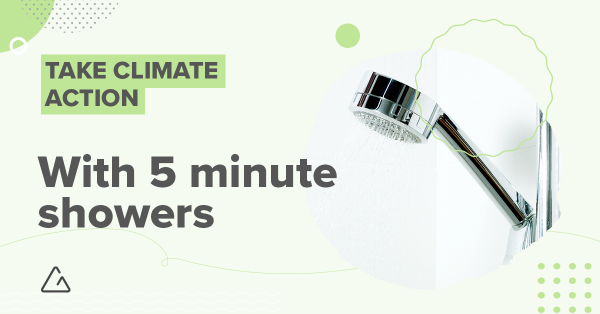
Conserving water is important, because it’s not as infinite as you might think. Though 71% of the Earth is covered by water, 96.5% of this is salt water. But, out of the remaining fresh water, 2% is unreachable, as it’s in ice form, far beneath the ground, or too polluted to use.
So, we have less than 1% of all the water on Earth available for our use.
In 2011, Unilever published a survey which found that the average shower time was 8 minutes. Since the average shower pumps out water at about 2.5 gallons (9.5 liters) per minute, we use roughly 20 gallons (76 liters) of water per shower!
Cutting that 8-minute shower saves a lot of water while still giving you plenty of time to get all the suds off. Need help timing a 5-minute shower? Harvard has a short blog post with 5 ways to time your shower.
Related Read: 25 Small Acts You Can Do to Have a Great Impact
2. Bring Your Own Bag
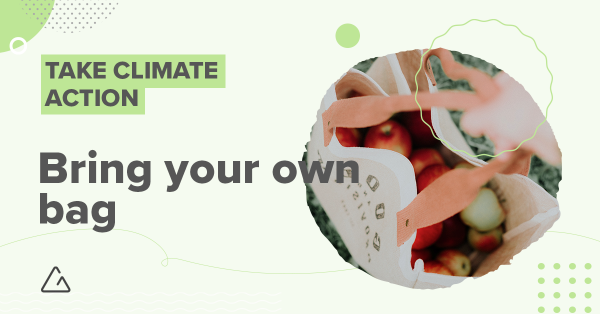
This is an easy and well-known solution to saving our environment, but one of the ways to beat climate change that many of us still struggle with.
First, let’s look at a few scary stats about single-use plastic bags, according to SPREP:
- Though they look flimsy, store-given plastic bags take up to 1,000 years to decompose;
- 500 billion plastic bags are used every year—which is about 1 million bags each minute;
- The amount of petroleum needed to make one plastic bag could power a car for 377 ft (115 meters);
- Plastic bags which end up in the oceans are responsible for the deaths of more than 100,000 marine animals, including sea turtles and fish which mistake them for food.
All it takes to do your part is to bring your own bag.
Avoid reusing a single-use plastic bag, because, although you’re helping a bit, it won’t last too long. Get yourself something sturdy, a reusable bag which is also foldable. Then, simply remember to take it with you each time you go shopping, or just keep it on your person or in your purse each day.
Related Read: 15 Earth Day Tips to Support the Environment & Stop Climate Change
3. Go Meat Free
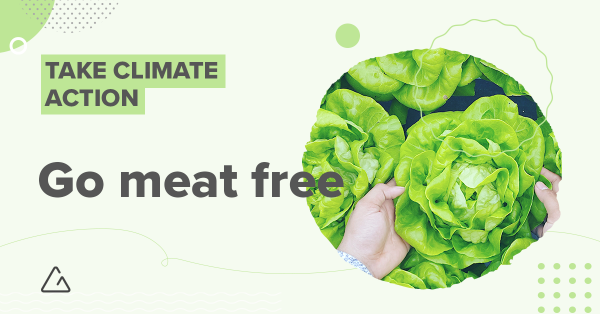
There are many ways how a vegetarian or vegan diet is better for the environment than one which includes meat.
First, there are the greenhouse gas emissions that pollute our atmosphere. According to a study by the European Parliament, for every 1 kg of beef or mutton consumed, anywhere from 7–37 kg of CO2 is produced in the animal’s lifetime. In fact, the average omnivorous eater is responsible for double the GHG emissions that vegetarian eaters are.
Aside from reducing carbon emissions, according to the World Wide Fund UK, a meat-inclusive diet requires 2.5 times the amount of land required for farming compared to a veggie diet. With the world population bordering on 10 billion by 2050, additional farmland will become more and more necessary, which will lead to deforestation to create the extra acreage.
Furthermore, a vegetarian diet uses less water, and we just discussed how important that is. The Vegetarian Society calculates that just 1 small 8oz chicken breast, enough for a single dinner, takes more than 143 gallons (542 liters) of water to produce. That’s enough to take almost 12 5-minute showers!
Related Read: 35+ Inspiring Quotes About Volunteering & the Joy of Serving Others
4. Unplug
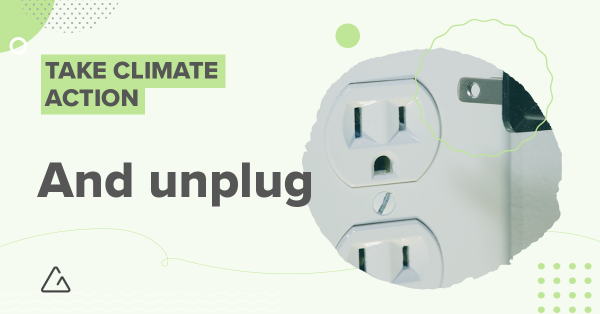
Not actively charging your phone?
Sure, you can unplug the phone from the charger. But, you should also unplug that charger from the outlet to reduce your carbon footprint and fight against climate change.
Believe it or not, plugged in cables, devices, and appliances still consume power. Known variously as “ghost load,” “phantom power,” or “vampire energy,” this seemingly tiny discharge adds up over time.
According to the Natural Resources Defense Council (NRDC), the typical US household spends about an extra $165 per year because of not unplugging items when not in use. As the New York Times relates this to climate impact, Americans alone add 44 million tons of CO2 just for keeping dormant devices plugged in.
Definitely one of the easiest ways to beat climate change—all it takes is a quick tug!
Related Read: 55+ Best Climate Change Quotes to Inspire Action for the Environment
5. Refill And Reuse
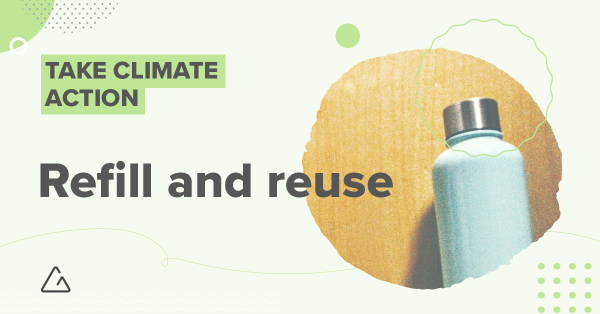
We humans make a lot of trash.
Most of the time, however, we live in ignorant bliss, far removed from the funky, unsightly mountainous peaks of the landfill. At the same time, we are ignorant of our own massive carbon footprint and the negative impact we’re having on our planet.
We talked about bags earlier, and yes, most of these single-use shopping bags end up at the dump after just one grocery outing. However, there’s way more than just plastic bags to refill or reuse.
Bought a bottle of water for refreshment? Save that bottle to refill later on. Has your liquid soap just run out? Reuse that dispenser rather than throwing it away after one go. Enjoyed a microwaveable TV dinner? Rinse out the plastic tray and use it again for a future snack.
Also, be creative. A strategically cut cola bottle can become a funnel. A plastic plate could be reused as a plant saucer. Disposable straws can be used for unclogging ketchup bottles or keeping necklaces tangle-free. The only limit is your imagination!
Here’s the thing: you’re not only helping to reduce waste and greenhouse gas emissions, but you’re also leaving more money in your pocket. It’s a win-win!
And, if you’re so inclined, that extra cash can be used to…
6. Plant A Tree
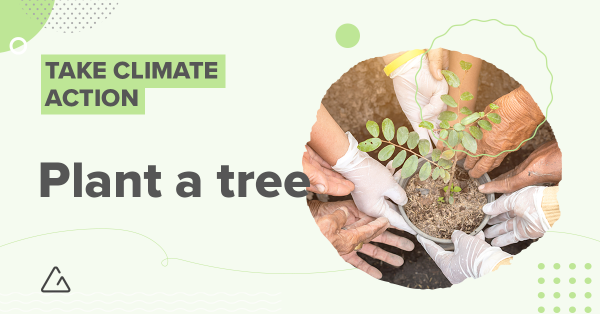
Trees are awesome—they help reduce erosion, provide shade, offer privacy, and give us the oxygen we need to survive. When combined with runaway cats, they give firefighters in suburban neighborhoods around the world job security.
However, planting new trees can also help us reduce climate change.
It’s hard to calculate how much carbon dioxide trees remove from the air, but estimates range from 40–100 lbs (18–45 kg) per year per average tree. Plant-for-the-Planet estimates that planting 1 trillion additional trees would remove up to 25% of human-produced CO2 emissions per year.
Researchers from the ETH Zürich university in Switzerland, led by Professor Tom Crowther, have found that there are about 3.04 trillion trees on the planet today. While that may seem like a lot, it’s about half as many (46%) as there were when human civilization first began. On top of that, 15 billion trees are chopped down every year from logging and deforestation, which is not to mention all the trees lost from increasing forest fires around the world.
Planting trees helps remove carbon dioxide from the atmosphere, but it also does it lower than almost any other climate change solution proposed so far. Hundreds of organizations exist which allow average people to donate as little as $0.30 to plant a single tree.
Here’s a pro tip for you: If you have a home, plant deciduous trees (those where the leaves fall off each year) nearby. During the winter when the tree is leafless, sunlight is able to shine through and help warm your home. However, during the hotter months, the fully-leafed tree blocks out the sun to offer shade and lower cooling costs!
Related Read: 10 Ways to Support the Sustainable Development Goals With Little Money
7. Pitch Your Idea

Ideas—we all have them. But, what do you do with them? If you keep them to yourself, they’re useless, soon to be forgotten. However, when shared, they have the potential to change the world.
Shared ideas have a great chance at becoming solutions, especially when pitched to the right people. Do you have an idea which could help reduce greenhouse gas emissions, lower non-biodegradable waste, improve access to clean energy, or how to prevent climate change from getting worse?
If so, pitch it on Goodwall!
Related Read: How to Save the Planet by Sharing Ideas on Climate Action
As a community of over 1.5 million members in 150+ countries, ideas shared on Goodwall get the traction and visibility they deserve. On top of that, they get proper support from a diverse group of individuals from all walks of life. With that kind of audience, even a small climate action or global warming idea could change the world and make a big difference.
Ready to participate? Log on to Goodwall’s app from your mobile device (iOS and Android). Then, hit the “+” icon in the bottom menu and share a “post” or “idea” on climate action! For more information, here’s a guide on how to pitch an idea on Goodwall and why you should share ideas on Goodwall.
Of course, the ideas above are just some of the actions you can take in the fight against climate change, but they’re by no means all! Be conscious of your carbon footprint, whether you are using fossil fuels or clean energy, and try to find the best ways in every aspect of your life where you can reduce emissions and make a difference. Take public transportation, use renewable energy when possible, and make sure to impart your knowledge about the climate crisis to as many people as possible!
Related Read: How Does Recycling Help the Environment? (& 10+ Materials to Recycle)




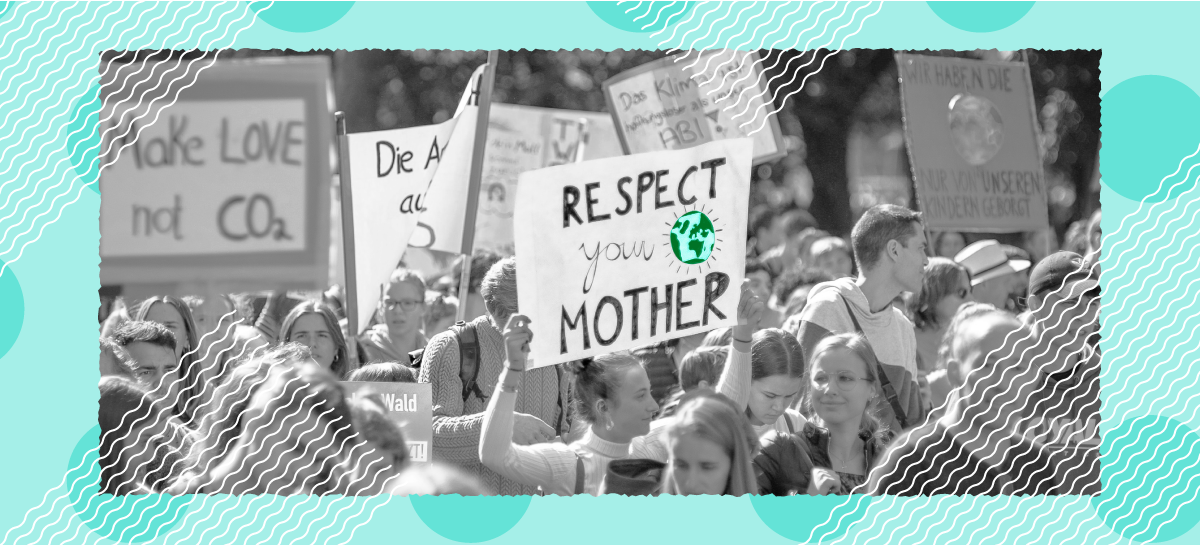


For a start, get everyone to read the book “Regeneration: Ending the Climate Crisis in one Generation” by Paul Hawken. There are many great ideas in this book, mostly being done in countries OTHER than the United States (What a shocker). For example: Azolla fern! This is a tiny fresh-water fern that lowers carbon dioxide levels. It is particularly beneficial in pulling heavy metals (like lead, nickel, zinc, copper, cadmium and chromium) out of water. This makes it perfect solution to mining tailing ponds, which are heavy with this kind of shit. However, I don’t think the mining industry has even heard of azalea fern, much less started using it. Azolla acts as a biofertilizer, soaking up phosphorus and putting nitrogen into the soil, so it therefore can reduce the need for chemical fertilizers. Azolla can also be used as a protein- and oil-rich superfood for domesticated animals. Azolla-fed chickens produce eggs with omega-3 in them! The oil in the feed can be fractioned off for use as carbon-neutral fuel (ethanol) in the tractors, trucks, etc. There is much more in the book that ‘we the people’ need to know about and start demanding that the polluting industries start doing! The government is NOT going to take this on in any meaningful way – that’s obvious. Corporations and large industries, like the pharmaceutical, fossil-fuel, and agriculture industries, won’t do anything unless forced to by consumers. We the people are on our own in this fight.
Climate change is real despite what some people might think and we really do need to take better care of the Earth so thank you for the great read!! I already shared it with some of my friends.
These are all good things, especially planting a tree and eating less meat, but they will do overall little to fight climate change.
1) Climate change and recycling are two different conversations. We have plenty of landfill space. Sure, we should use less plastics. But the urgency should be about emissions.
2) Using less water is irrelevant compared to CO2 emissions. Especially if you’re not in a drought-prone region. Once again, people focused on this instead of emissions are not looking at the big picture. Glaciers are melting, the earth is heating, water levels are rising.
3) There are no quick fixes. We need a carbon tax, renewable energy, solar cars, and way way less consumption. Even if we do all these things, we still have nitrogen from farming.
There’s still hope. Perhaps once energy is renewable we’ll have enough power to operate carbon-sucking machines. But we have a long ways to go.
Sorry to hijack your post. These are all good things to do.
Hi Greg, thanks so much for writing in, as well as for your detailed response!
You make some amazing points there, and I hope readers will scroll down to the comments section to see it. As for the CO2, a few years back there was that Carbon Tracker study, which blamed a mixture of 100 state-owned, private, and public companies related to unclean energy with more than 70% of our carbon emissions – do you think that these tips might be perhaps more relevant if you removed them from the picture for the everyday person (meaning if the remaining 30% of carbon emissions is all we had to deal with)? I guess the greatest thing we could do would be to lobby and strike around the world against these fossil fuel companies?
Also, I wrote two follow-up posts to this one, one about how recycling helps the environment and the other giving 15 Earth Day tips, both with perhaps a bit more talk about CO2 emissions within. I’d be honored if you had a look at those, as well, as I’m curious as to what you might think about them.
Anyway, thank you so much for writing in, Greg, and I will definitely keep your comment in mind for when I write my next related article. Have a great day!
We could use less coal and even save certain elements. Or, maybe pick up trash and recycle what needs to be recycled, to prevent plastic production and trees (I feel like trees fight climate change :D) .
Excellent ideas, Valencia, for sure! Perhaps you could post your ideas on the Goodwall app?
The carbon emission substance completely band and plastic are reuse and plantation the ipen land main the restoration of open land and complete stop burn of carbon emission compund